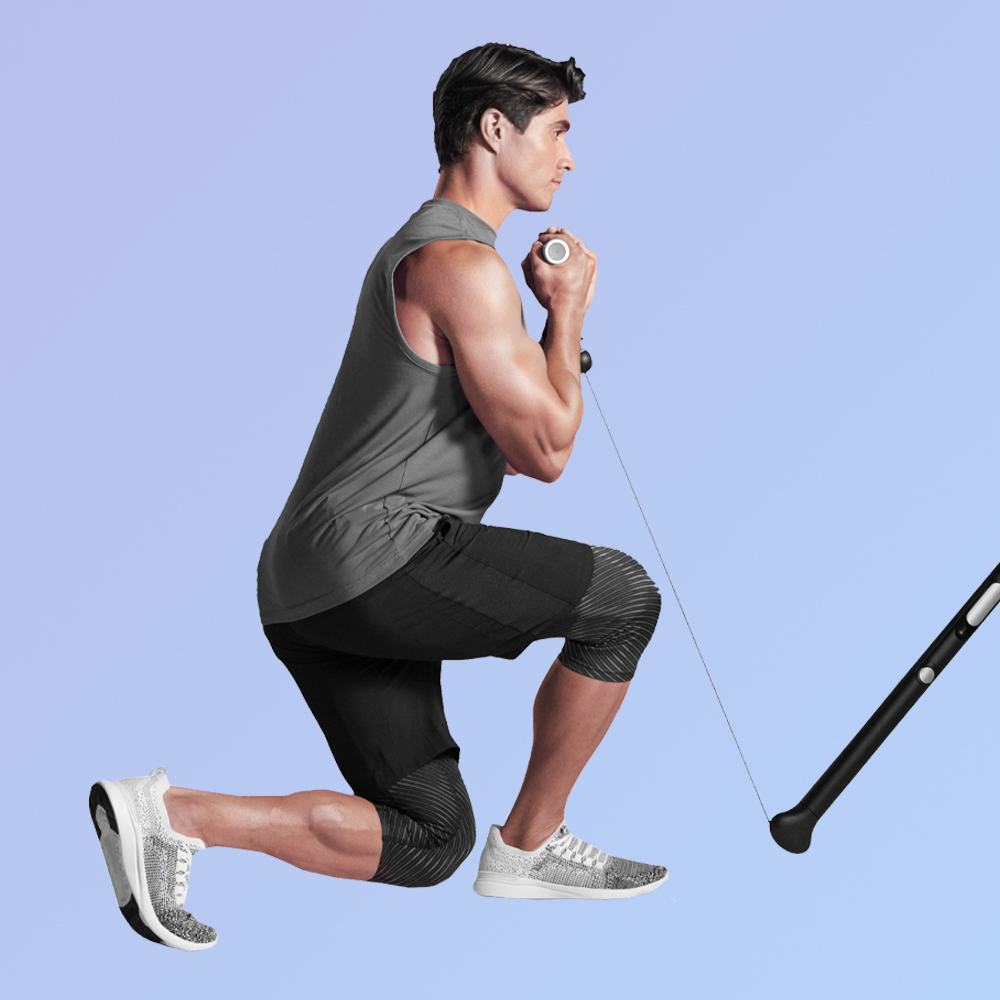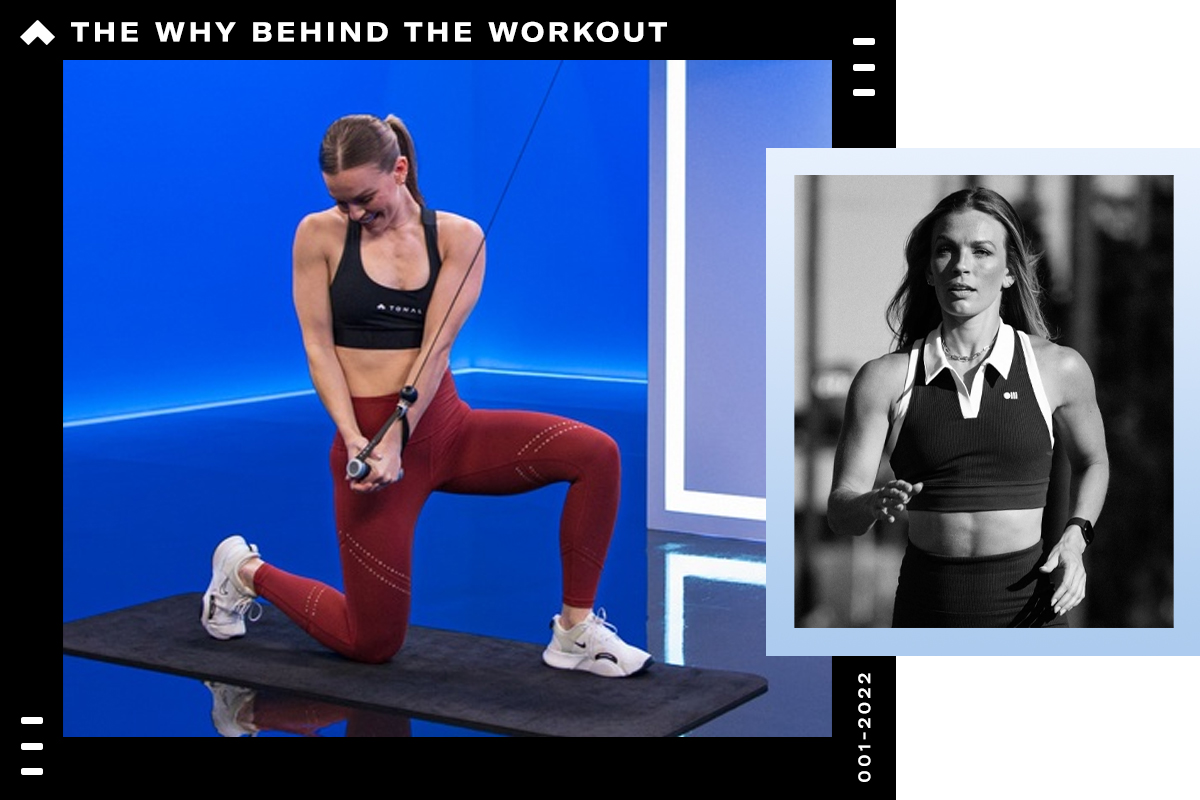Prevent common running pains by strengthening the muscles around your hips, knees, and ankles.

When she was training for her first marathon eight years ago, Tonal Coach Ash Wilking suffered a stress fracture in her hip. “The top of my femur in my hip socket was actually cracked,” she says. “It all came from the lack of strength training.”
The injury taught Wilking, now a certified personal trainer and competitive triathlete, the value of adding resistance training to her running routine. Looking back on her injury, she realized she was logging high-volume mileage without the muscular strength to support it.
Wilking isn’t alone. From patellofemoral pain (or runner’s knee) to shin splints, overuse injuries are common among runners. According to one meta-analysis, roughly half of runners experience an injury each year.

To protect vulnerable areas like the knees, hips, and ankles, Coach Kendall “Woody” Wood, a certified personal trainer and runner, says, “you want to strengthen the musculature surrounding those joints—the glutes, quads, hamstrings, and calves.” As this meta-analysis demonstrates, strength training can cut the likelihood of sports injuries by one-third to half.
“Stronger muscles equate to less stress on bones, joints, and tendons,” says Wood. “Running is obviously a high impact sport, so it’s important that we have the strength to be able to handle that repeated impact.”
If you’d rather be outside running, the good news is you don’t need to spend hours lifting to prevent injuries. This study shows two to three days of resistance training per week is enough to improve running economy. Add the exercises below into your routine, or try a run-focused Tonal program like Strength for Runners with Wood or 5K Strong with Coach Liz Letchford that’ll hit all those major running muscles.
Iso Split Squat

Why it Works: In this isometric squat, Wood says, “you’re helping to stabilize the knee, stretch the hip flexors, and improve your quad strength.” If you’re recovering from an injury or you’re just getting started with strength training, she recommends getting comfortable with bodyweight exercises before adding weight.
How to Do It: Get into a half kneeling position with your back knee on your mat, back toes tucked, and front leg planted on the floor in front of you. Lift the back knee just barely above the floor to create 90 degree angles with both knees and raise your arms straight overhead.
Single-Leg Romanian Deadlift

Why it Works: “Any single leg movement pattern is going to be really good for runners because it’s essentially mimicking your running pattern—you’re taking off on one foot at a time,” says Wood. Tonal Coach Kristina Centenari, a certified personal trainer and Ironman competitor, agrees that this single leg lift is a “great test of stability.” She recommends the move for building both balance and stability in the joints that support you when you run. The hinging motion also encourages proper pelvic and hip orientation which aids running posture.
How to Do It: Lift one leg straight back like you’re trying to kick the ceiling with your heel, dropping your upper body as the leg lifts. Imagine your torso is a barbell reaching from your heel to your head. Use the glute of the planted leg to power the torso back up and repeat on the same side.
Goblet Curtsey Lunge

Why it Works: Like the single-leg Romanian deadlift, this lunge challenges one leg at a time which, Wood explains, is “good for identifying and pointing out any imbalances in the stability of your knees, ankles, and hips.” She adds that this move targets major running muscles like the quads, hamstrings, glutes, and abductors. Wilking especially likes how the crossover movement of the back leg challenges runners to work in a different plane of motion. “Any type of lateral (side-to-side) movement is actually going to be really beneficial for us,” she says.
How to Do It: Hold the handle at the strap with thumbs wrapped around the top. Position it in front of your chest and stand tall at the end of Tonal’s arm. Reach one leg back to lower down, dropping the knee toward the mat. Just before the knee reaches the mat, cross it behind the planted foot, just outside the ankle. Press the floor away from you with the glute of the front leg to power up and repeat on the same side.
Bent-Knee Calf Raise

Why it Works: Centenari says calf strength and ankle mobility are “the missing puzzle pieces” for preventing shin splints and Achilles tendinitis. These calf raises help with both. Because you’re doing the exercise from a squat position in this variation, Wood says “you’ll get the added bonus of a quad burn.”
How to Do It: Staying in the squat position, lift the heels off the floor. Press the balls of the feet into the floor as if you’re about to walk on your tiptoes. Lower the heels to the floor and repeat.
Jump Squat

Why it Works: To complement the strength you’re building with heavy lifting, plyometric moves like jump squats help develop your running power. “We’re teaching our joints not only to produce force, but to absorb it, which is what’s happening every single step when you run,” says Centenari.
How to Do It: Squat down like you’re sitting into a chair behind you with your arms straight down toward your hips. Press the floor away from you through your heels to jump up while bringing your arms overhead. Land back in a squat position and repeat.
Farmer March

Why it Works: If you experience back pain from running, the source might be weakness in your core. “A strong core is going to be integral to your running pattern,” says Wood. “It’s going to help you avoid improper loading of any of the joints in the lower body, and it’s also going to strengthen the back.” Centenari calls the farmer march a “beautiful core move for a runner,” because it forces you to keep your hips stable as you lift your leg to your chest. ”Focus on eliminating as much lateral lean as possible,” she says.
How to Do It: Stand between Tonal’s arms. Take a handle in each hand with your arms at your side. Slowly drive one knee up toward the ceiling, balancing on the opposite leg. Alternate legs.
Resisted Leg Lowering

Why it Works: Wood also likes this move for strengthening the core and hip flexors. Since it’s performed with the legs straight, it’s also a good way to work the quads if you’re currently experiencing pain when bending your knee.
How to Do It: Take a handle in each hand and lie faceup on your mat with your arm extended toward the ceiling over your chest. Start with your legs extended straight over your hips toward the ceiling. Lower one leg to just above the floor. Bring the leg up to the starting position and alternate sides.
Standing Single-Arm Row

Why it Works: Wilking explains that strong back and shoulder muscles are important for maintaining good running form. “Having the strength to pull keeps you upright,” she says. “Pulling your shoulder back in space is going to help keep your core and spine aligned, which is what’s going to help with lower back pain as you run.”
How to Do It: Using your back, pull the handle toward your torso with your palm facing your body, aiming your elbow to the wall behind you. Extend your elbow and straighten your arm back to the starting position. Repeat.
The information provided in this article is for educational and informational purposes only. Individuals with pre-existing health conditions, injuries, or concerns should consult with their healthcare provider before trying a new exercise or nutrition regimen.


